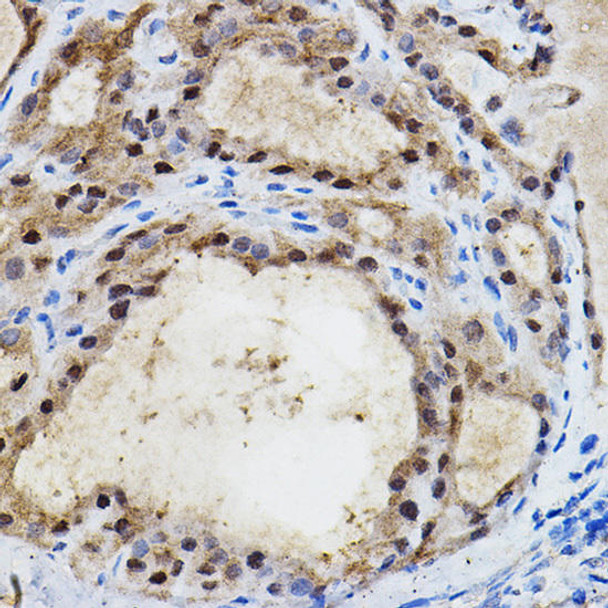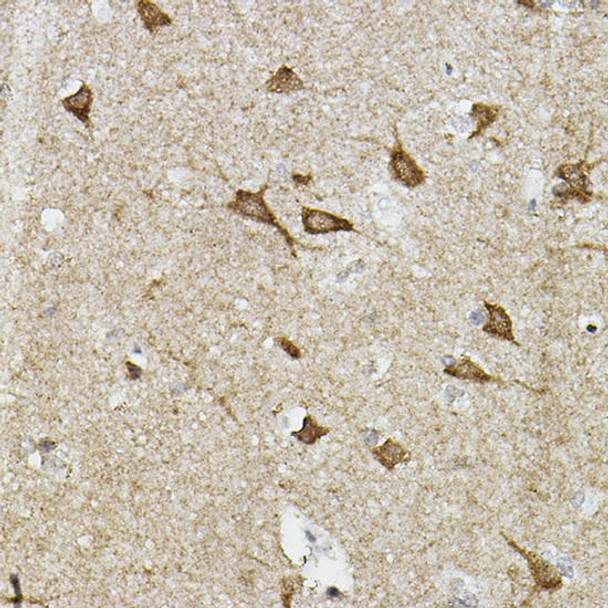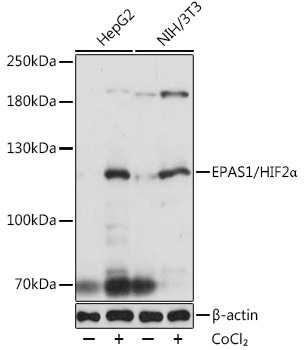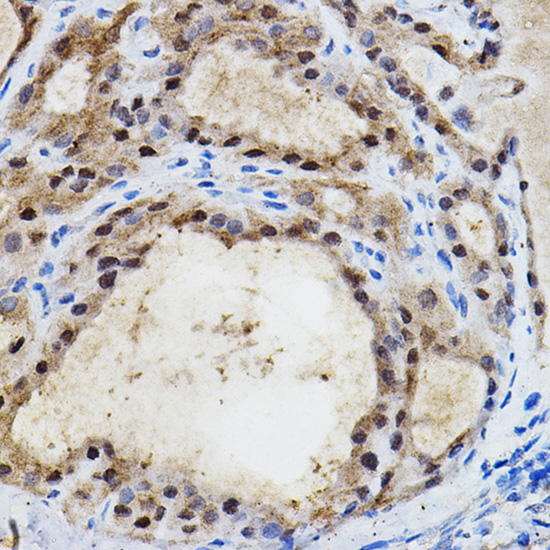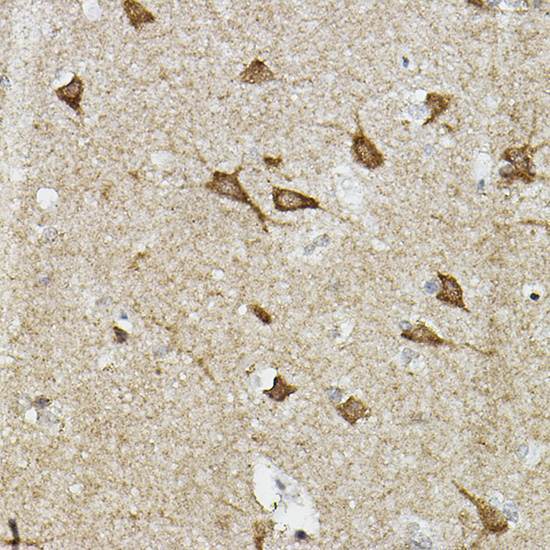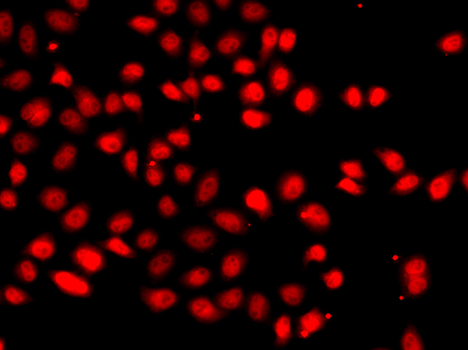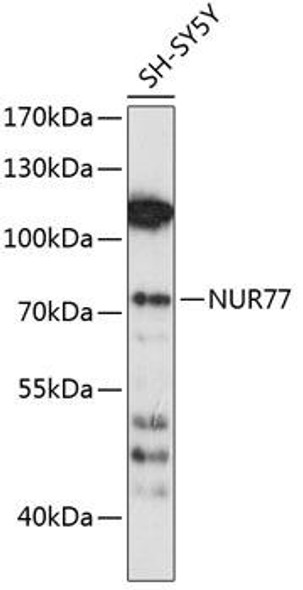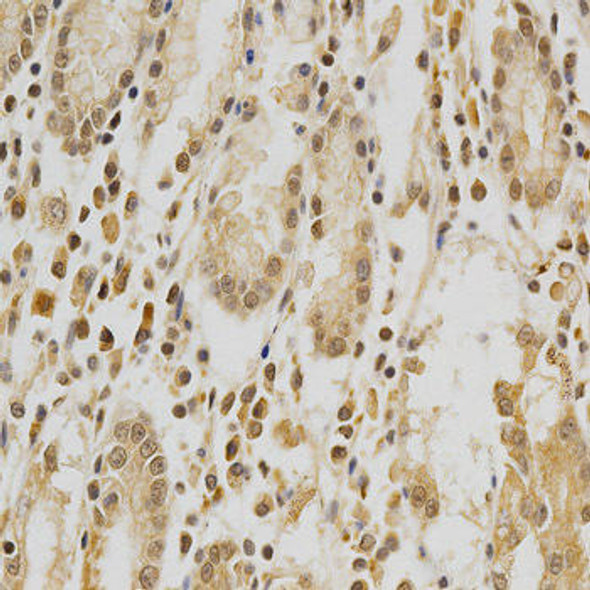Description
Anti-EPAS1/HIF2Alpha Antibody (CAB7553)
The Hif2a Polyclonal Antibody (CAB7553) is a valuable tool for researchers studying the Hif2a protein, also known as hypoxia-inducible factor 2 alpha. This antibody, generated in rabbits, is highly specific to human samples and has been validated for use in Western blot applications.Hif2a is a transcription factor that plays a crucial role in cellular response to low oxygen levels, or hypoxia. It is involved in regulating genes that control processes like angiogenesis, erythropoiesis, and metabolism. Dysregulation of Hif2a has been implicated in various diseases, including cancer, cardiovascular disease, and neurological disorders.
By using the Hif2a Polyclonal Antibody, researchers can detect and analyze the Hif2a protein in different cell types, providing insights into its function and potential therapeutic targets. This antibody is particularly useful for studies in cancer research, where Hif2a has been identified as a key player in tumor progression and metastasis. Understanding the role of Hif2a in hypoxia response can lead to the development of targeted therapies for cancer and other hypoxia-related diseases.
| Antibody Name: | Anti-EPAS1/HIF2Alpha Antibody |
| Antibody SKU: | CAB7553 |
| Antibody Size: | 20uL, 50uL, 100uL |
| Application: | WB IHC IF |
| Reactivity: | Human, Mouse, Rat |
| Host Species: | Rabbit |
| Immunogen: | Recombinant fusion protein containing a sequence corresponding to amino acids 588-870 of human EPAS1/HIF2Alpha (NP_001421.2). |
| Application: | WB IHC IF |
| Recommended Dilution: | WB 1:500 - 1:2000 IHC 1:50 - 1:200 IF 1:50 - 1:100 |
| Reactivity: | Human, Mouse, Rat |
| Positive Samples: | HepG2, NIH/3T3 |
| Immunogen: | Recombinant fusion protein containing a sequence corresponding to amino acids 588-870 of human EPAS1/HIF2Alpha (NP_001421.2). |
| Purification Method: | Affinity purification |
| Storage Buffer: | Store at -20'C. Avoid freeze / thaw cycles. Buffer: PBS with 0.02% sodium azide, 50% glycerol, pH7.3. |
| Isotype: | IgG |
| Sequence: | FQQQ LESK KTEP EHRP MSSI FFDA GSKA SLPP CCGQ ASTP LSSM GGRS NTQW PPDP PLHF GPTK WAVG DQRT EFLG AAPL GPPV SPPH VSTF KTRS AKGF GARG PDVL SPAM VALS NKLK LKRQ LEYE EQAF QDLS GGDP PGGS TSHL MWKR MKNL RGGS CPLM PDKP LSAN VPND KFTQ NPMR GLGH PLRH LPLP QPPS AISP GENS KSRF PPQC YATQ YQDY SLSS AHKV SGMA SRLL GPSF ESYL LPEL TRYD CEVN VPVL GSST LLQG GDLL RALD QAT |
| Gene ID: | 2034 |
| Uniprot: | Q99814 |
| Cellular Location: | Nucleus, Nucleus speckle |
| Calculated MW: | 96kDa |
| Observed MW: | 120kDa |
| Synonyms: | EPAS1, ECYT4, HIF2A, HLF, MOP2, PASD2, bHLHe73 |
| Background: | This gene encodes a transcription factor involved in the induction of genes regulated by oxygen, which is induced as oxygen levels fall. The encoded protein contains a basic-helix-loop-helix domain protein dimerization domain as well as a domain found in proteins in signal transduction pathways which respond to oxygen levels. Mutations in this gene are associated with erythrocytosis familial type 4. |
| UniProt Protein Function: | HIF2A: Transcription factor involved in the induction of oxygen regulated genes. Binds to core DNA sequence 5'-[AG]CGTG-3' within the hypoxia response element (HRE) of target gene promoters. Regulates the vascular endothelial growth factor (VEGF) expression and seems to be implicated in the development of blood vessels and the tubular system of lung. May also play a role in the formation of the endothelium that gives rise to the blood brain barrier. Potent activator of the Tie-2 tyrosine kinase expression. Activation seems to require recruitment of transcriptional coactivators such as CREBPB and probably EP300. Interaction with redox regulatory protein APEX seems to activate CTAD. Efficient DNA binding requires dimerization with another bHLH protein. Heterodimerizes with ARNT. Interacts with CREBBP. Interacts with EGLN1. Interacts with VHL. Expressed in most tissues, with highest levels in placenta, lung and heart. Selectively expressed in endothelial cells. |
| UniProt Protein Details: | Protein type:DNA-binding; Transcription factor Chromosomal Location of Human Ortholog: 2p21-p16 Cellular Component: cytosol; nucleoplasm; transcription factor complex Molecular Function:DNA binding; histone acetyltransferase binding; protein binding; protein heterodimerization activity; sequence-specific DNA binding; transcription factor binding Biological Process: myoblast cell fate commitment; positive regulation of transcription from RNA polymerase II promoter; response to hypoxia; signal transduction; somatic stem cell maintenance Disease: Erythrocytosis, Familial, 4 |
| NCBI Summary: | This gene encodes a transcription factor involved in the induction of genes regulated by oxygen, which is induced as oxygen levels fall. The encoded protein contains a basic-helix-loop-helix domain protein dimerization domain as well as a domain found in proteins in signal transduction pathways which respond to oxygen levels. Mutations in this gene are associated with erythrocytosis familial type 4. [provided by RefSeq, Nov 2009] |
| UniProt Code: | Q99814 |
| NCBI GenInfo Identifier: | 32470617 |
| NCBI Gene ID: | 2034 |
| NCBI Accession: | Q99814.3 |
| UniProt Secondary Accession: | Q99814,Q86VA2, Q99630, |
| UniProt Related Accession: | Q99814 |
| Molecular Weight: | 96,459 Da |
| NCBI Full Name: | Endothelial PAS domain-containing protein 1 |
| NCBI Synonym Full Names: | endothelial PAS domain protein 1 |
| NCBI Official Symbol: | EPAS1 |
| NCBI Official Synonym Symbols: | HLF; MOP2; ECYT4; HIF2A; PASD2; bHLHe73 |
| NCBI Protein Information: | endothelial PAS domain-containing protein 1 |
| UniProt Protein Name: | Endothelial PAS domain-containing protein 1 |
| UniProt Synonym Protein Names: | Basic-helix-loop-helix-PAS protein MOP2; Class E basic helix-loop-helix protein 73; bHLHe73; HIF-1-alpha-like factor; HLF; Hypoxia-inducible factor 2-alpha; HIF-2-alpha; HIF2-alpha; Member of PAS protein 2; PAS domain-containing protein 2 |
| Protein Family: | Endothelial PAS domain-containing protein |
| UniProt Gene Name: | EPAS1 |
| UniProt Entry Name: | EPAS1_HUMAN |


